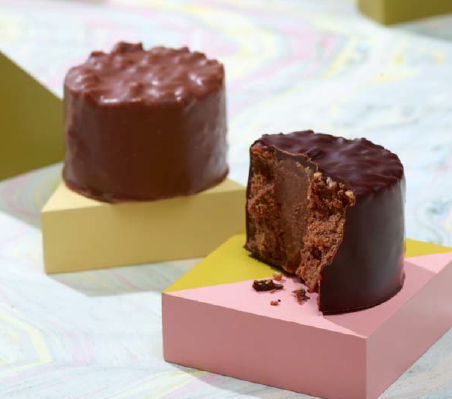ONCE UPON A TIME ...
All articles… The Praline
Towards the middle of the seventeenth century, a man named Jaluzot, who was born in Montargis and was in charge of the kitchens of the Duke of Choiseul, Count of Plessis-Praslin, apparently discovered the technique that made the surface of a sugared almond uneven and dedicated this candy to his illustrious boss. The anecdote may well be true: treatises on pastry and candies of the second half of the seventeenth century indeed mention many recipes of “praslines”, not all of them made of almonds but all covered with an envelope of cooked sugar.
Pralin, as far as it is concerned, simply comes from praline, a lightly roasted almond, sometimes a hazelnut, with cooked sugar crushed into more or less small pieces. However, and even though pralin was produced all along the eighteenth century, nobody dared to boast about it and the words “pralin” and “praline” appear in dictionaries quite a bit later. As of the nineteenth century, Parisian pastry adds the Praliné to its list of cakes: a génoise with filling covered with praline butter cream, sprinkled with crushed almonds, or the famous Paris-Brest, filled with praline chiboust cream. Balzac, in 1846 and slightly ahead of his time, gave the definition of “Praliner” in La Cousine Bette: “Fill, sprinkle, mix with crushed pralines!”

As for the Praliné, as it is known today, it is a recent creation of chocolate makers: a pralin to which chocolate and butter are added to make chocolate bonbons. However different pralin and praliné May be, they share the same requirements of quality as far as the base material is concerned and concerning the fineness of the grinding, for which some old machines are eagerly searched for.
The success of the praliné has even played a role in the meaning of the word “praliner”, which is now used in horticulture to describe the act of “coating the roots of a young plant with a protective mixture”, a mixture that gives it the looks of a praline. In Belgium, this agricultural reference has indeed been retained to name their chocolate bonbons “pralines”.
Bénédict Beaugé (Paris) is a writer and historian of contemporary cuisine.
BRIEFLY
Laurent Le Daniel has just been named a Chevalier dans l’Ordre National du Mérite. Congratulations to him for this prestigious award, which rewards a passionate pastry chef very invested in the sustainability of his profession.
Prepare Valentine’s Day! Take the time to discover the chocolate or fruity sweets offered by our chefs for sale online. By ordering this week you will be delivered on time.
The French team is selected for the Pastry World Cup! She won the European Cup ahead of Italy and the United Kingdom who are also selected for the grand final in January at Sirha.
JOBS
Pâtisserie
La maison Zanin recrute pour son laboratoire de Sallanches un Second pâtissier en CDI – 39h. Toutes les informations ici !
Pâtisserie
La maison Ducobu, en Belgique, recrute sur différents postes. Toutes les informations ici.





